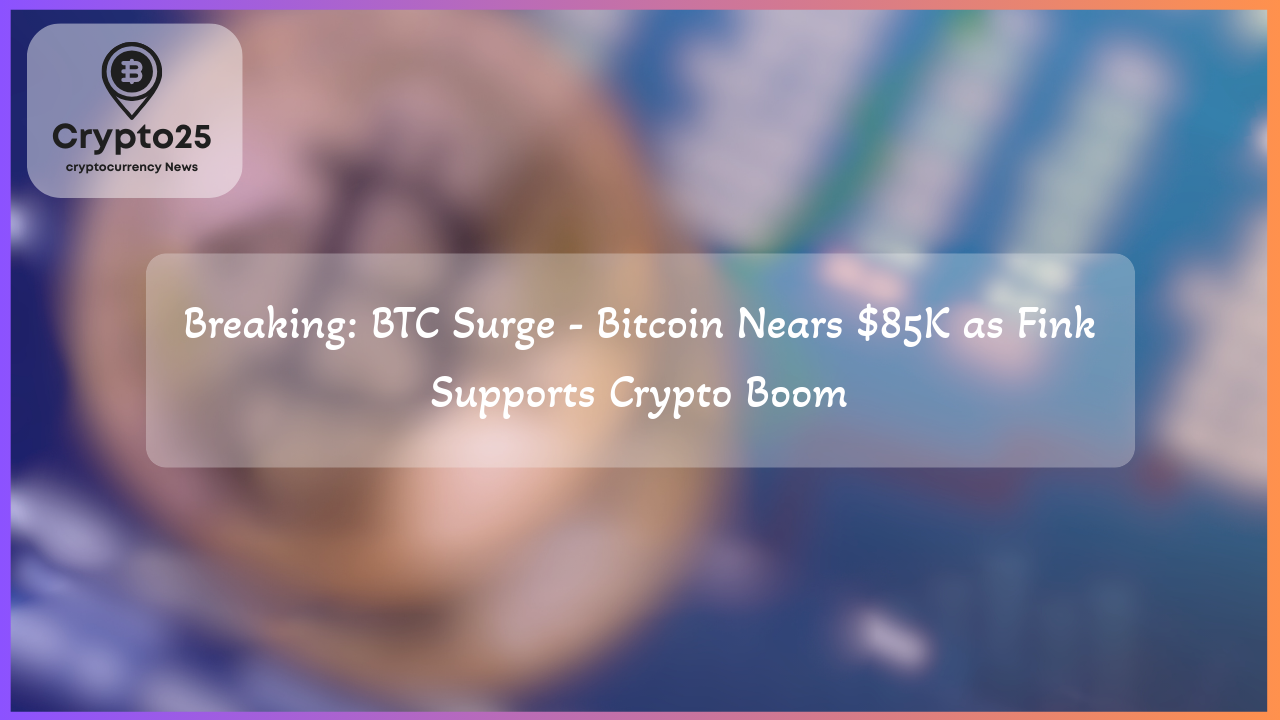
Bitcoin has once again taken center stage as its price approaches $85,000, drawing both applause and speculation within the crypto world. Major names like Bitcoin and Ethereum continue to dominate the market while proving resilient amidst global economic uncertainty. Meanwhile, evolving legislation and institutional activities are transforming the crypto landscape, solidifying digital assets as a key player in the global financial ecosystem.
## Bitcoin Nears $85,000: A Turning Point for Crypto?
The cryptocurrency world is abuzz as Bitcoin inches closer to the $85,000 mark, an all-time high that reinforces its position as digital gold. Fidelity reports indicate that Bitcoin has entered an “acceleration phase,” underscoring its broader adoption as both an investment asset and a hedge against inflation. Furthermore, Bitcoin supply on exchanges is now at its lowest level since 2018, signaling increased investor confidence in holding the asset long-term rather than seeking short-term liquidity.
Financial leaders such as BlackRock’s Larry Fink are also expressing optimism for Bitcoin. Fink suggested that rising U.S. debt levels might push savvy investors toward Bitcoin as a hedge against economic instability. According to Fink, the future of finance is rooted in blockchain technology, and the ability to tokenize every asset class further strengthens Bitcoin’s role in the larger financial system.
## Ethereum and Altcoins: New Trends in Decentralized Finance
Ethereum (ETH) continues to shape the decentralized finance (DeFi) movement, even as its fees hit their lowest level in five years. Reports show that Base, a layer-2 blockchain built on Ethereum, generated only $1.1 million in revenue over the last 90 days. Despite these numbers, activity on Ethereum-based platforms has been steadily rising, with decentralized applications (dApps) and tokenized assets gaining traction across the ecosystem.
Similarly, smaller altcoins are making waves, as new projects and innovative solutions draw investor interest. For example, Sonic, an emerging blockchain protocol, has seen its total value locked (TVL) increase by an impressive 75% over the past month. This uptick highlights the growing appetite for altcoins beyond Ethereum as users seek projects that provide diverse functionalities and faster transaction speeds.
The competitive dynamics between Ethereum and these emerging protocols show that the crypto world remains highly innovative and dynamic, with room for both established blockchains and agile newcomers alike.
## Institutional Adoption and Legislative Developments in the Crypto Space
Institutional adoption of crypto assets is accelerating at a rapid pace. Tether, a major stablecoin issuer, minted $1 billion in USDT during the first quarter and revealed a purchase of $735 million worth of Bitcoin during the same period. Similarly, MicroStrategy continues to double down on Bitcoin, adding $1.92 billion to its existing holdings. Meanwhile, McCormick disclosed that it had purchased Bitcoin worth $600,000, further demonstrating that institutions are betting heavily on the world’s oldest cryptocurrency.
On the legislative front, significant progress has been made to foster a favorable environment for crypto adoption. Senator Tuberville plans to reintroduce the Financial Freedom Act, which could provide clarity and protections to investors in the crypto space. Additionally, the Treasury Department is set to release disclosure documents about its crypto holdings on April 5, signaling greater transparency and public accountability in managing digital assets.
Notably, Bolivia recently overturned its ten-year ban on cryptocurrency usage, setting the stage for increased adoption across Latin America. This transformative shift signals the possibility of other nations re-evaluating outdated policies to accommodate the digital economy.
| Title | Details |
|---|---|
| Market Cap | $1.2 Trillion |
## A Global Perspective on Crypto’s Future in Finance
It’s clear that cryptocurrency is no longer a niche asset but a fundamental innovation reshaping global financial systems. From institutional investments in Bitcoin to the exponential growth of Ethereum and altcoins, the market buzz reflects a deeper shift toward tokenization and decentralized economies. As regulatory clarity improves and adoption widens, the prospects for crypto are increasingly intertwined with our financial future, pointing to what could be a new era of digital finance. Investors, innovators, and governments alike are taking note as blockchain technology cements its place in the digital age.
